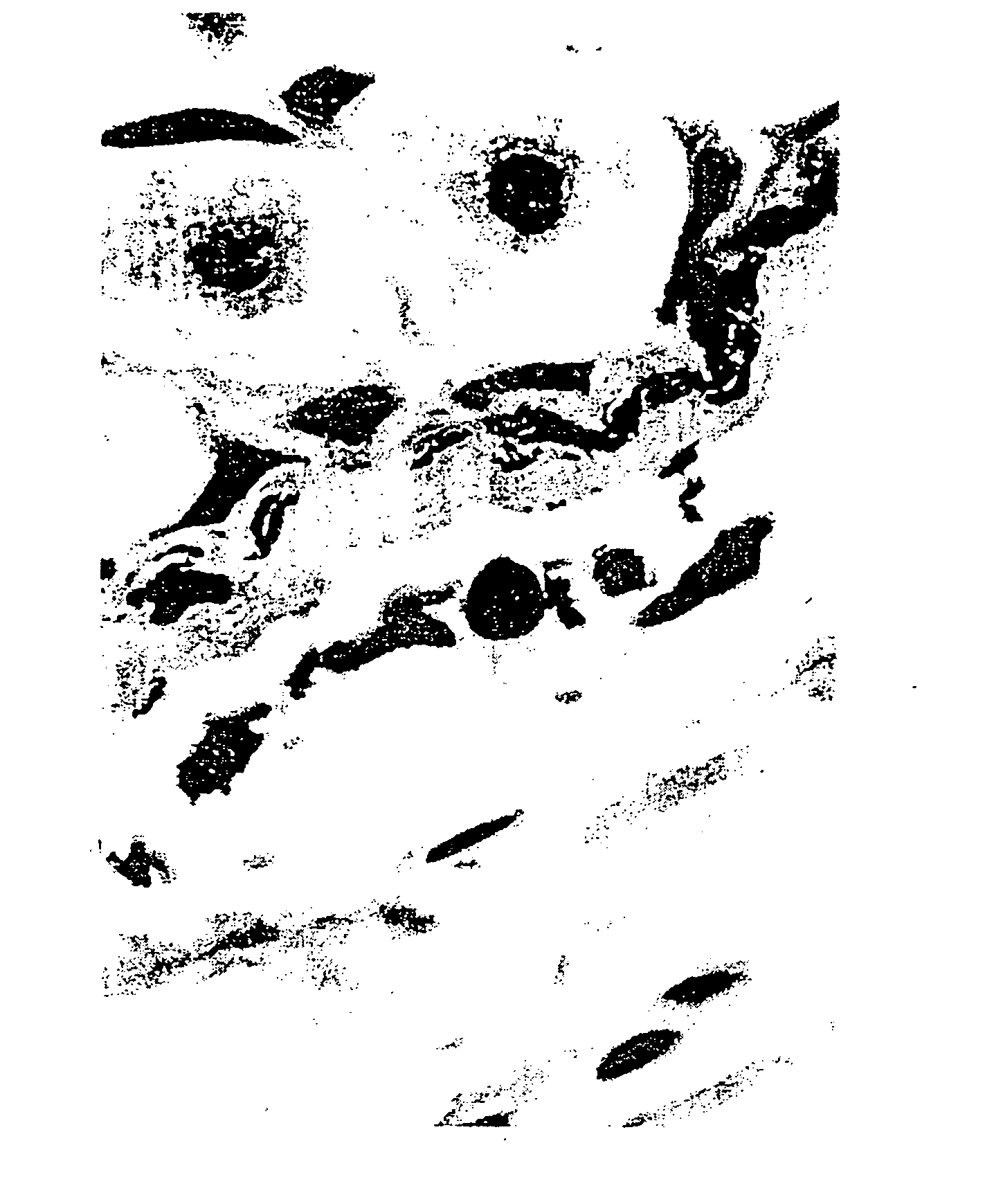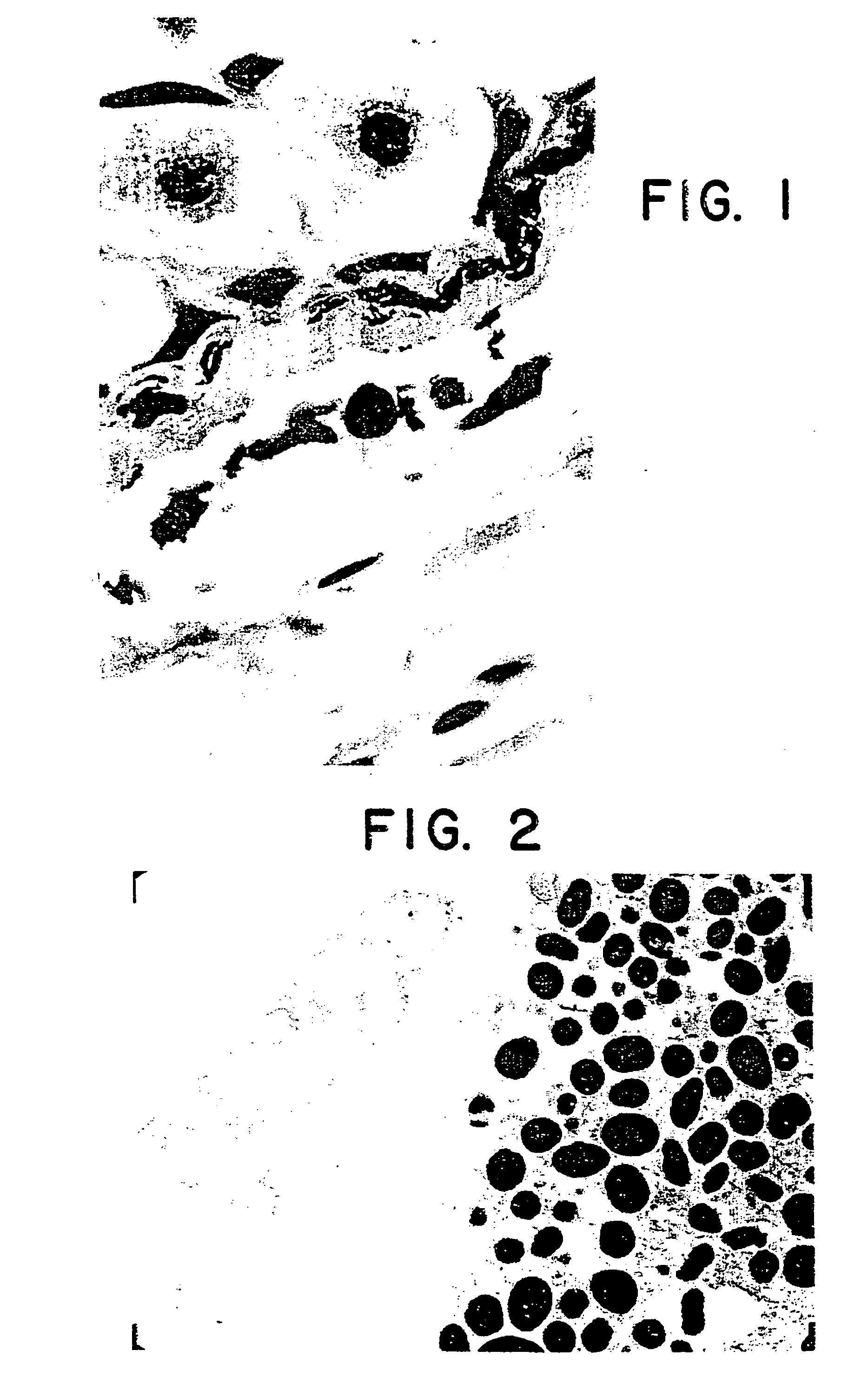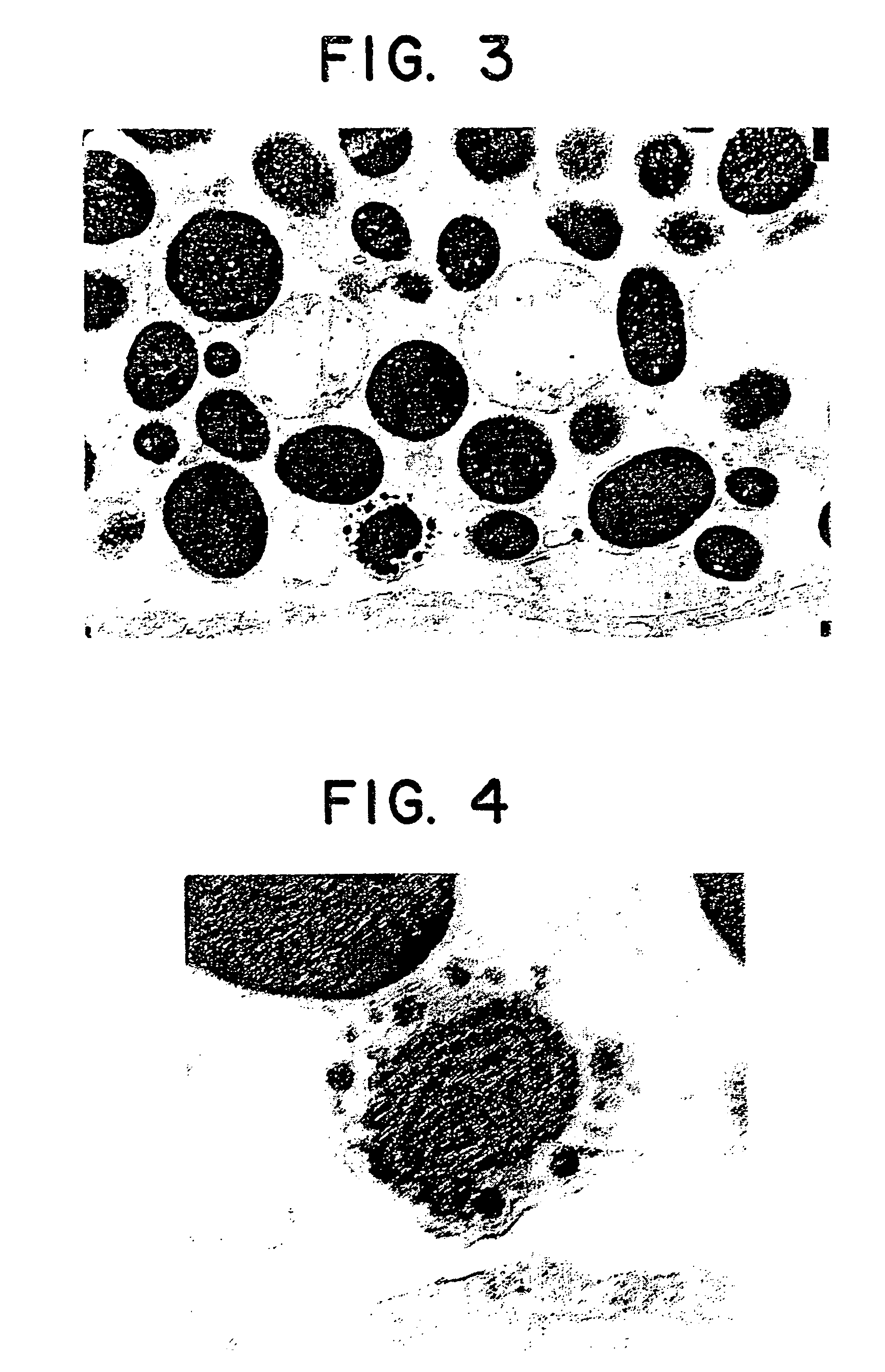Methods for regeneration of a mammalian lens
- Summary
- Abstract
- Description
- Claims
- Application Information
AI Technical Summary
Benefits of technology
Problems solved by technology
Method used
Image
Examples
example 1
Stimulating the Regeneration of a Lens in a Gerbil
Materials and Methods
[0129]The effect of guanosine and beta-carotene on stimulating the regeneration of an amputated lens was examined in Mongolian Gerbils (Meriones unguiculatus).
Animals: 4 Week-Old Mongolian Gerbils from Charles River Laboratories Wilmington, Mass.
General Conditions:
Temperature:
[0130]
Days 1–23:22° C.Day 24:26° C.Day 25:29° C.Day 26:32° C.Days 27–61:35° C.
Photoperiod: 12 Hrs Light; 12 Hrs Dark
[0131]
TABLE IGerbil Protocol GroupsGroup No.Diet Days 1–33Diet Days 34–62MalesFemales101A*A44102A, CTA55103A, CT, GA55104A, CT, BA, B55105A, CT, G, BA, B55106A, GA44107A, G, BA, B44108A, BA, B44Totals3636*A = AIN 93 G (a standard rodent diet available from Dyets, Inc., Bethlehem, PA), C = copper deficient diet with 30% of normal copper (normal copper = 6 mg / kg diet; copper deficient = 30% normal = 1.8 mg copper per kg diet), T = 0.5% Triethylenetetramine Tetrahydrochloride (trien), B = 1% Dunaliella Beta-carotene with two times...
example 2
Enhanced Protocols for Stimulating the Regeneration of a Lens in a Gerbil
1. An Improved Protocol for Stimulating the Regeneration of a Lens in a Gerbil
[0152]The following experiment on lens regeneration in a gerbil will be conducted to improve the experimental protocol for all further studies, and to obtain additional specimens for histological and ultrastructural analysis.
[0153]Thirty six 3-week-old Mongolian Gerbils will be obtained from Charles River Laboratories (Wilmington, Mass.) and acclimated for one week at Product Safety Laboratories (East Brunswick, N.J.) animal care facilities. The temperature will be kept at 22° C. throughout the experiment because it is now believed that the higher temperatures (35° C.) may be unnecessary. They will be kept on a 12 hour light / dark photoperiod and fed Purina Rat Chow during the one week acclamation period. Three groups of 12 animals each will be used.
[0154]
GROUPSDIET 1DIET 2(1)Zinc Acetate 0.1%AIN(2)Guanosine 1% + Beta-carotene 1%Beta-c...
example 3
Lens Regeneration in a Mice and Rats
[0168]24 three-week-old strain of REJ mice from Jackson Labs will be obtained. They will be divided into two equal groups.
[0169]
GROUPDIET 1DIET 2(1)Guanosine 1% + Beta-carotene 1%Beta-carotene 1%(2)Control AIN dietAIN
[0170]The temperature will be maintained at 22° C. throughout the experiment. The photoperiod will be 12 hours light / dark. The animals will be fed Diet 1 for 2 weeks. Then the animals will be anesthetized with ketamine and xylazine, and then lentectomy will be performed as previously described for gerbils. Then the animals will be fed Diet 2 for 6 weeks. At the end of Diet 1, two animals for EM and two for histology will be sacrificed from each group. At end of Diet 2 four animals for EM and four for histology will be sacrificed.
[0171]The same protocol will be repeated with Sprague Dawley rats.
PUM
| Property | Measurement | Unit |
|---|---|---|
| Mass | aaaaa | aaaaa |
| Mass | aaaaa | aaaaa |
| Fraction | aaaaa | aaaaa |
Abstract
Description
Claims
Application Information
 Login to View More
Login to View More - R&D
- Intellectual Property
- Life Sciences
- Materials
- Tech Scout
- Unparalleled Data Quality
- Higher Quality Content
- 60% Fewer Hallucinations
Browse by: Latest US Patents, China's latest patents, Technical Efficacy Thesaurus, Application Domain, Technology Topic, Popular Technical Reports.
© 2025 PatSnap. All rights reserved.Legal|Privacy policy|Modern Slavery Act Transparency Statement|Sitemap|About US| Contact US: help@patsnap.com



